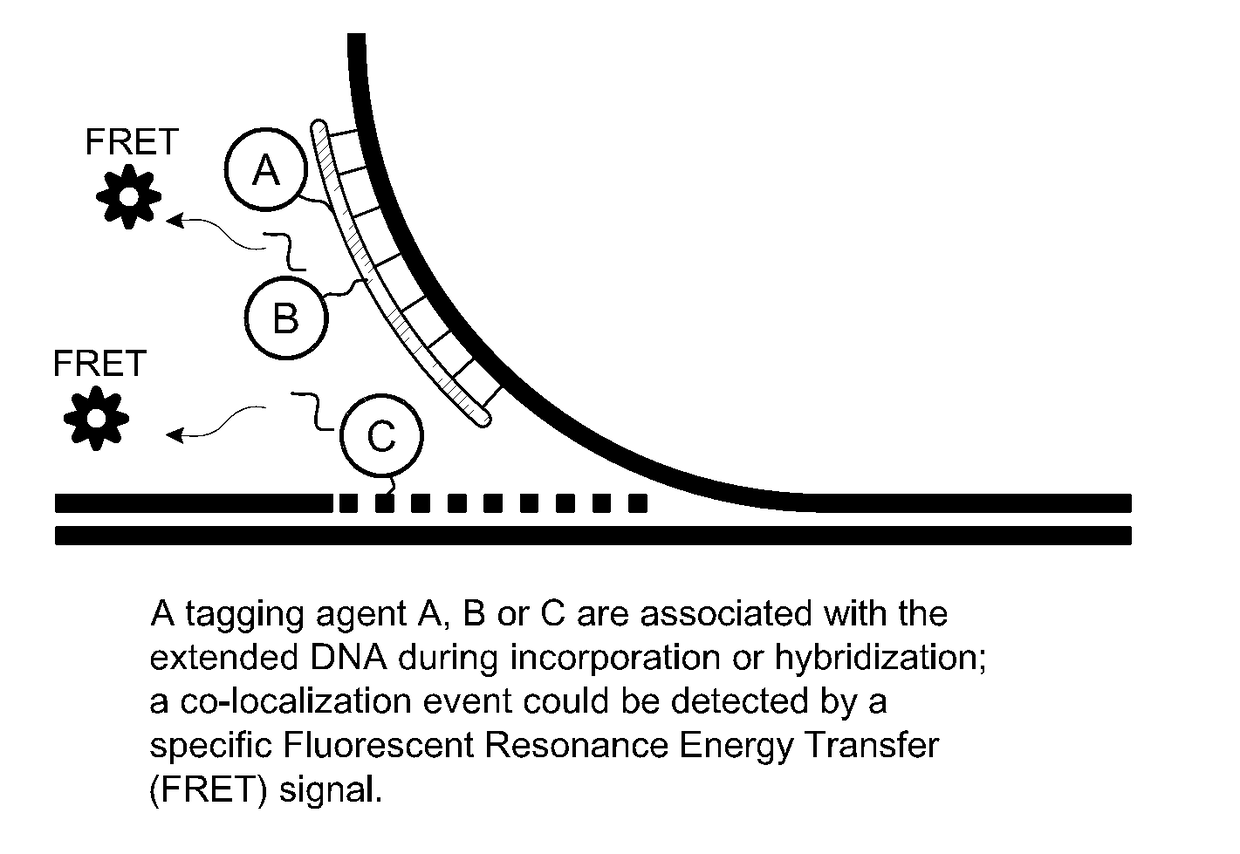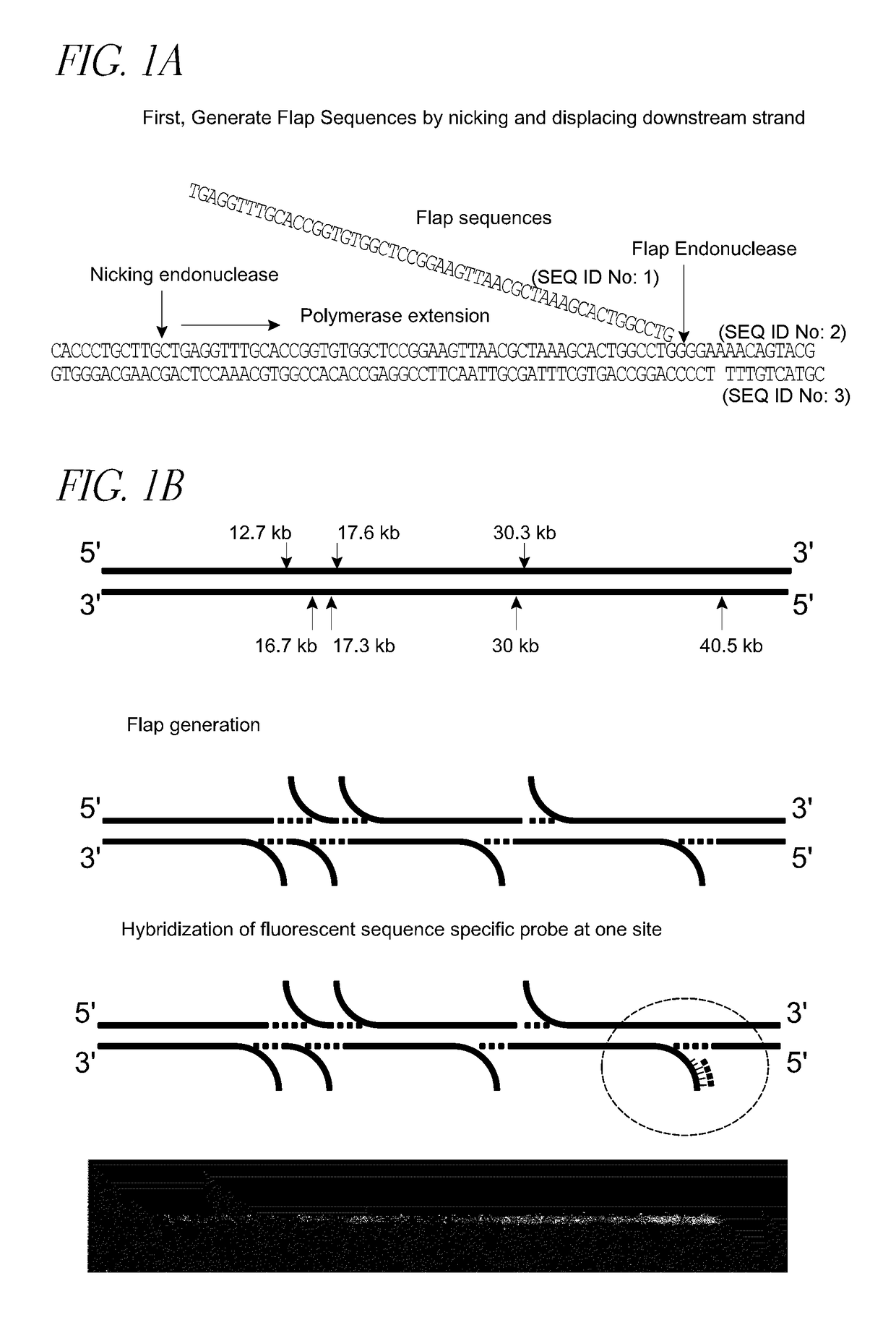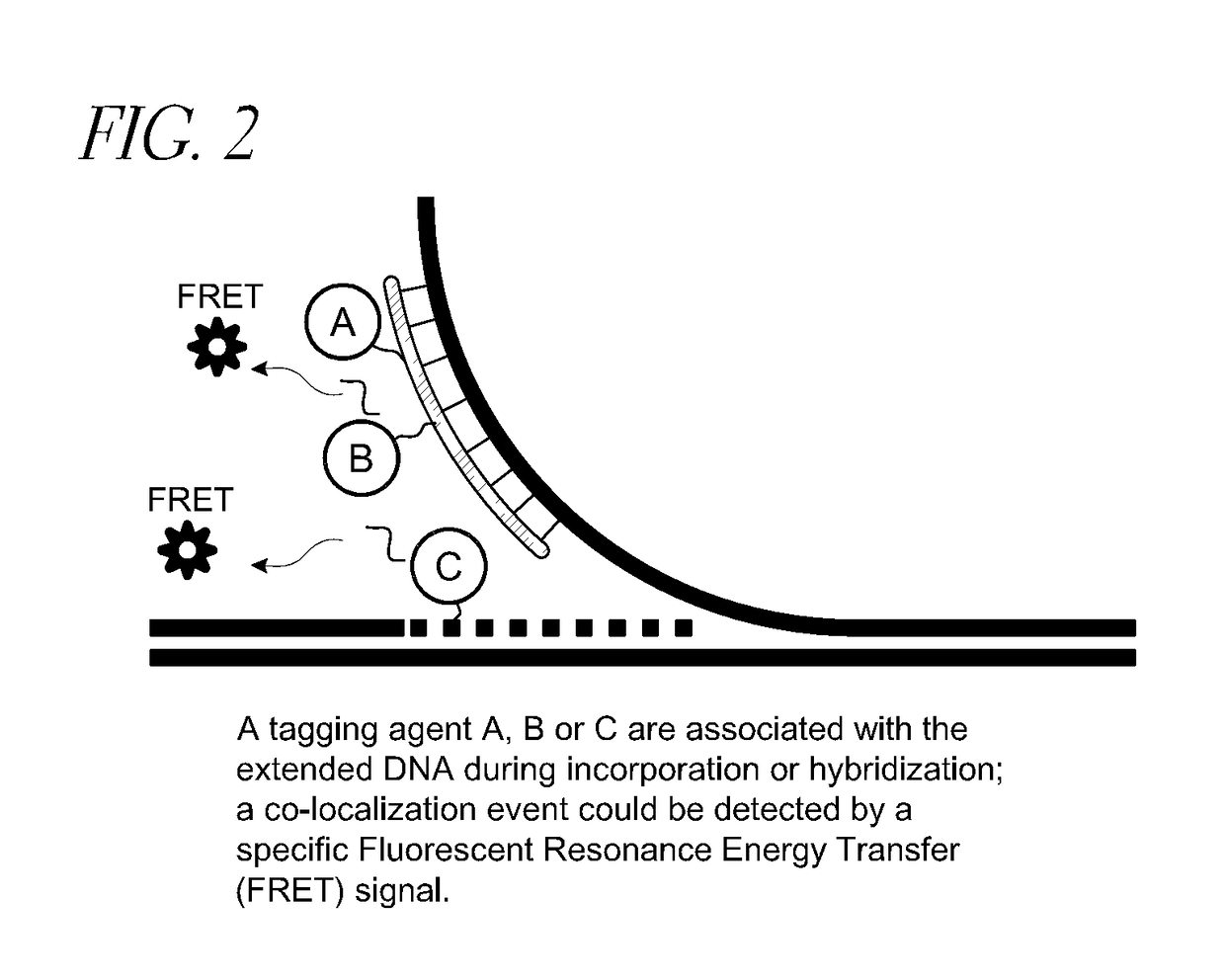Methods and devices for single-molecule whole genome analysis
a single-molecule, whole genome technology, applied in the field of nanofluidics, can solve the problems of limiting speed and inconsistency, laborious methods, and relatively low sensitivity and resolution in detecting medium to small sequence motifs or lesions
- Summary
- Abstract
- Description
- Claims
- Application Information
AI Technical Summary
Benefits of technology
Problems solved by technology
Method used
Image
Examples
embodiments
ADDITIONAL EXAMPLES AND EMBODIMENTS
Additional Embodiments
[0141]As described elsewhere herein, the claimed invention provides, inter alia, methods relating to DNA mapping and sequencing, including methods for making long genomic DNA, methods of sequence specific tagging and a DNA barcoding strategy based on direct imaging of individual DNA molecules and localization of multiple sequence motifs or polymorphic sites on a single DNA molecule inside the nanochannel (<500 nm in diameter). The methods also provide continuous base by base sequencing information, within the context of the DNA map. Compared with prior methods, the claimed method of DNA mapping provides improved labeling efficiency, more stable labeling, high sensitivity and better resolution; our method of DNA sequencing provide base reads in the long template context, easy to assemble and information not available from other sequencing technologies, such as haplotype, and structural variations.
[0142]In DNA mapping applicatio...
example 1
g Single Stranded DNA Flaps on Double Stranded DNA Molecules
[0161]Genomic DNA samples were diluted to 50 ng for use in the nicking reaction. 1OuL of Lambda DNA (50 ng / uL) were added to a 0.2 mL PCR centrifuge tube followed by 2 uL of 1O×NE Buffer #2 and 3 uL of nicking endonucleases, including but not limited to Nb.BbvCI; Nb.Bsml; Nb.BsrDI; Nb.BtsI; Nt.AlwI; Nt.BbvCI; Nt.BspQI; Nt.BstNBI; Nt.CviPII. The mixture was incubated at 37 degrees C. for one hour.
[0162]After the nicking reaction completes, the experiment proceeded with limited polymerase extension at the nicking sites to displace the 3′ down stream strand and form a single stranded flap. The flap generation reaction mix consisted of 15 μl of nicking product and 5 μl of incorporation mix containing 2 μl of 1O× buffer, 0.5 μl of polymerase including but not limited to vent(exon-), Bst and Phi29 polymerase and 1 μl nucleotides at various concentration from IuM to ImM. The flap generation reaction mixture was incubated at 55 deg...
example 2
g Single Stranded DNA Gaps on Double Stranded DNA Molecules
[0163]After flap generation, the original nicking endounuclease was used to nick the filled double stranded DNA and Flap endonulceases including but not limited to FEN1 was used to cut the flap sequences. By increasing the temperature, the nicked single stranded DNA molecules were removed from the double stranded DNA molecules to generate a single stranded DNA gap on double stranded DNA molecules.
PUM
 Login to View More
Login to View More Abstract
Description
Claims
Application Information
 Login to View More
Login to View More - R&D
- Intellectual Property
- Life Sciences
- Materials
- Tech Scout
- Unparalleled Data Quality
- Higher Quality Content
- 60% Fewer Hallucinations
Browse by: Latest US Patents, China's latest patents, Technical Efficacy Thesaurus, Application Domain, Technology Topic, Popular Technical Reports.
© 2025 PatSnap. All rights reserved.Legal|Privacy policy|Modern Slavery Act Transparency Statement|Sitemap|About US| Contact US: help@patsnap.com



